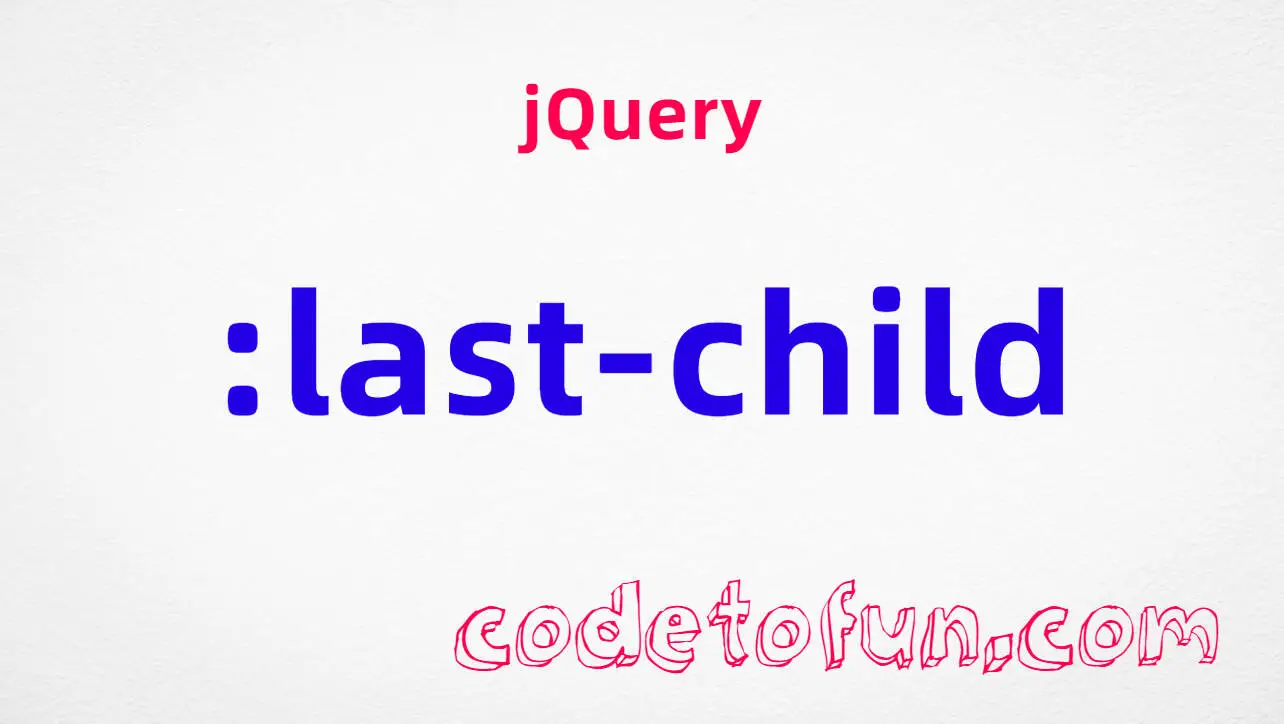
jQuery Selectors
jQuery :last-child Selector

Photo Credit to CodeToFun
🙋 Introduction
In jQuery, selectors are powerful tools that enable developers to target specific elements in HTML documents for manipulation or interaction. One particularly useful selector is :last-child, which allows you to target the last child element of its parent. Understanding how to use the :last-child selector effectively can streamline your development process and enhance the interactivity of your web pages.
In this guide, we'll explore the usage of the jQuery :last-child selector with clear examples to help you grasp its potential.
🧠 Understanding :last-child Selector
The :last-child selector targets the last child element within its parent. This can be useful for scenarios where you need to style, manipulate, or interact with the last element in a group.
💡 Syntax
The syntax for the :last-child selector is straightforward:
$("parent_selector:last-child")📝 Example
Selecting the Last Child Element:
Suppose you have a list of elements and you want to select and style the last one. You can achieve this using the
:last-childselector as follows:index.htmlCopied<ul> <li>Item 1</li> <li>Item 2</li> <li>Item 3</li> </ul>example.jsCopied$("ul li:last-child").css("color", "red");This will change the text color of the last <li> element within the <ul> to red.
Applying Styles to the Last Paragraph in Each Section:
If you have multiple sections on your webpage and you want to style the last paragraph in each section differently, you can use the
:last-childselector along with the parent selector. For example:index.htmlCopied<section> <p>Paragraph 1</p> <p>Paragraph 2</p> <p>Paragraph 3</p> </section> <section> <p>Paragraph A</p> <p>Paragraph B</p> </section>example.jsCopied$("section p:last-child").css("font-weight", "bold");This will make the last paragraph in each section bold.
Adding Event Handlers to the Last Button in a Group:
You can also attach event handlers to the last button in a group of buttons using the
:last-childselector. For instance:index.htmlCopied<div class="button-group"> <button>Button 1</button> <button>Button 2</button> <button>Button 3</button> </div>example.jsCopied$(".button-group button:last-child").click(function() { alert("Last button clicked!"); });This will trigger an alert message when the last button in the .button-group is clicked.
Dynamically Generating Content with the Last Child Selector:
If you're dynamically generating content and need to apply specific styles or functionality to the last element, you can utilize the
:last-childselector in your jQuery scripts to target the dynamically generated last child element.
🎉 Conclusion
The jQuery :last-child selector is a valuable tool for targeting and manipulating the last child element within its parent. Whether you're styling elements, attaching event handlers, or dynamically generating content, this selector provides a convenient way to interact with the last element in a group.
By mastering its usage, you can enhance the interactivity and aesthetics of your web pages effectively.
👨💻 Join our Community:
Author

For over eight years, I worked as a full-stack web developer. Now, I have chosen my profession as a full-time blogger at codetofun.com.
Buy me a coffee to make codetofun.com free for everyone.
Buy me a Coffee











